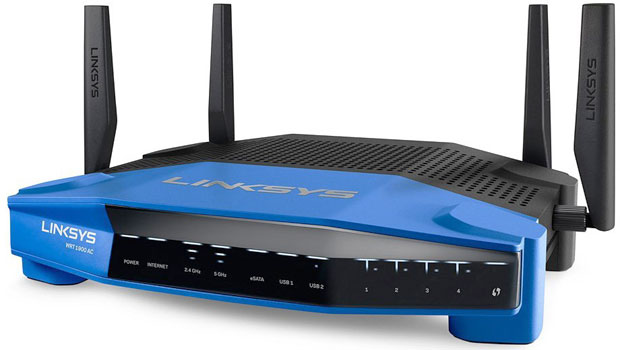
I spent much of last week talking about Facebook’s infamous study of nearly a million customers and the company’s attempts to make half of those customers (Facebook friends) happier and the other half more depressed.
Setting aside how insanely stupid it was for Facebook to do this is the fact that with social media, isn’t social the real problem? I mean, could this be like the old dot-com companies — could the entire segment be a fraud? Are we just waiting for that little kid to finally scream “the emperor has no clothes!” — or in this case, that Facebook may be a news source, but it isn’t any more social than the socially inept hot-or-not bulletin board that began its life?
Facebook actually started out as a site called “Facemash,” which made fun of unattractive people in Harvard. While certainly representative of the cruelty in colleges and found to be illegal — suggesting some rather severe ethical issues with Facebook’s founder — it actually had social elements, a natural hierarchy for one, that Facebook since has lost.
I’ll dig into that this week and close with my product of the week: a rather impressive new home router from Linksys.
What Is Social?
The term “social” refers to a characteristic of living organisms as applied to populations of humans and other animals, according to Wikipedia. It always refers to the interaction of organisms with other organisms and to their collective coexistence, irrespective of whether they are aware of it or not, and irrespective of whether the interaction is voluntary or involuntary.
In the broadest sense, anything that is communication — from email to text messaging — could be social, but I think the pivot is “interaction.” Interaction is reciprocal action, effect or influence. Going back to the bulletin board that Facebook was based on, was it social? Or was it the means in which social interaction was initiated? Certainly a bulletin board is a catalyst for a social event, but it is not that event in and of itself.
To approach this a different way, the most social time in my life was when I was in college. This is when I had the most friends and participated in the most social activities — going dancing, to parties, ski trips etc. “Social” was defined for me as being part of a group sharing experiences that would stay with us the rest of our lives. A Super Bowl party was social, as was a group ski trip, or going as a group to a bar or club.
Companies used to have social events, often called “beer busts,” where executives and employees would intermingle and get to know each other. A core component of “social,” to me, is shared experience — getting to know other people closely, and building real friendships.
There is another aspect of “social,” and that is establishing a pecking order — a hierarchy, if you will — so people know where they stand. This is very typical of political social events, business social events, and school social events. Who didn’t know the in-crowd — particularly if you weren’t part of it?
Facebook Isn’t Social
How many of your Facebook “friends” do you really know much about? How many have you never even met? How many do you do things with or share experiences with — other than commenting on a kitten video? Like email, Facebook does keep friends in contact with one another — but unlike email, it isn’t very intimate. Would you really share the kinds of things on Facebook that you would in an email? Probably not — which suggests that email actually may have more social depth than a social network.
This takes me back to that Facebook study. If you found out that a “friend” had attempted, without your explicit permission, to make you unhappy, I’ll bet that person would fall off your friend list. Friends you socialize with — people you trust and who trust you — don’t betray you (well, they do, but typically not more than once). Neither you nor I would put friends at risk without asking them first, and if we don’t feel the need to ask, then they probably aren’t friends.
I don’t think the existing “social networks” are any more social than any other news site that allows comments from both authors and readers. They’re not any more social than a classroom is social. The key aspect of social — giving a crap about the person you are socializing with — is not a requirement. It is actually the exception, because you likely email, talk on the phone with, or party with the folks you are close to more intimately than you Facebook with them.
I think that is why engagement and ad conversion rates are far lower than expected. Social network expectations are set on the belief that social networks are social, that people trust what the other people on the network say more than they trust an author in a publication — but they don’t. In fact, they may trust them far less.
Twitter is a crowdsourced news stream; Facebook is a blend of crowdsourced news and digital bulletin board. Neither is social, and both likely should stop using that word because it sets expectations that the services can’t meet.
Facebook Lost Its Way
Strangely, I think Facebook at Harvard was social. It was a tool created to help new and existing students get to know each other. However, much like the frosting on a cupcake is not the cake itself, Facebook evolved away from the “getting to know each other” part, and like frosting alone, is now just a small part of what initially made it a successful social tool.
I think Facebook has forgotten why it exists — and if that isn’t corrected, Facebook eventually will fail.
Wrapping Up: Why Does It Matter?
I think this matters, because when people have an impression of a thing different from what it is, they’ll make mistakes. In the social networks’ case, this is overvaluing the property — or perhaps trusting people on it more than they should.
You may have friends on Facebook, but all of your Facebook friends aren’t your friends. Hell, most likely couldn’t care less what you look like or what you care about. If you categorized them as strangers who took an interest in you, you’d likely behave more reasonably around them than if you thought of them as friends.
Could a social network become social? Facebook clearly started out with a much more socially oriented mission — well, after its making-fun-of-ugly-people start. I think it could come back. Google Hangouts used properly could be a way to have a true virtual social event where people look and talk to each other rather than at each other.
You know the difference, right? When you were young, your older relatives talked at you and didn’t really care what you thought (hell, they still may not). Your real friends, though — and if you have a good relationship with them, your parents now — talk with you. The latter is social, but the former isn’t even close.
In the end, I think Facebook either needs to become social or stop pretending. Only then will it stop being the problem child, making avoidable mistakes week after week. Take a look at how Facebook COO Sheryl Sandberg deals with that screwy Facebook study. She basically says that Facebook’s mistake wasn’t what it did, but that we were told about it. That’s not how you treat friends — you apologize to friends. That’s how you treat things. You don’t have to tell things anything, and Facebook’s COO clearly feels that telling us was the mistake. I think the bigger mistake is in thinking of Facebook users as subhuman.
Some days, watching Facebook really is kind of like watching a small child run with scissors.
Product of the Week: Linksys WRT1900AC

I’ve been having real access point problems. For a long time, the best one I’d tried was Apple’s product, and I ran into it after finding that it was what Cisco engineers used, because Linksys, which was owned by Cisco at that time, sucked. Technology advanced, though, and the Apple product didn’t. Once again, I went looking for the best consumer access point on the market, and the consensus now is that it is the Linksys WRT1900AC.

After installing it, I agree. This thing is fantastic — easily outstripping the Netgear Nighthawk it replaced. It has more range, better reliability, much easier setup, and you even can administer it from a cloud service that Linksys provides.
What is also interesting is that after it was installed, my Speedtest scores jumped significantly. I went from 20M to 50M down and 3M to nearly 12M up, which indicates I was getting much more of the bandwidth I was paying for.
This is a high-end consumer access point, and it just dropped in price to around $250. It has four antennas and covers all of the current wireless protocols, short of WiGig. If you are having WiFi issues and don’t mind spending $250 for one hell of a wireless router, check out the Linksys 1900 AC, my product of the week.






















































